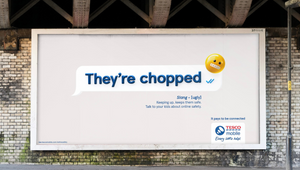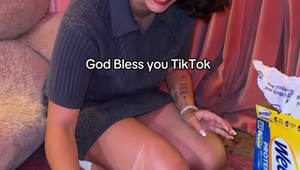
The Future of Instagram: Social Commerce or NFTs?

The future of Instagram is here – and it’s looking a lot like a social commerce platform
Has your Instagram been looking different lately? A bit less about people showing off brunches and holidays? A bit more… shoppy? (With a bit of TikTok thrown in, but that’s a separate topic.)
It’s not just you: Instagram has been working hard to merge more shopping behaviours into its UX.
‘Shops on Instagram’ was released in May 2020 as “an immersive full-screen storefront [...] all in a native shopping experience.”
The timing wasn’t incidental: Instagram positioned the update as a way to help small businesses continue to operate during Covid lockdowns.
Instagram soon added a dedicated shop tab at the bottom menu (so visible throughout the scrolling experience) and in late 2021, the platform introduced live-stream shopping.
In terms of how people actually use the platform, this shoppification of Instagram makes perfect sense: 90% of Instagram users follow a brand on the platform, and 72% of users say they’ve made a purchase decision after seeing a post.
In April 2022, Instagram took things another step further and gave all users the ability to directly link to products and brands in their uploads. This, too, builds on existing behaviours: people are already tagging brands in their photos in hopes of recognition, be it a simple comment, having their content reposted from the brand page, or even being sponsored by the brand.* The update also feeds into social advertising behaviours: people repeatedly describe recommendations from family and friends as the most credible form of advertising (I myself was enticed to buy a pink satin bomber jacket after seeing one of my sisters wear it in her Instagram stories).
Instagram itself positioned this update as another boon for small businesses:
“Scored a new pair of earrings from a small business you love? Tag the product in your Feed post so your friends and followers can learn more about the earnings and shop them!!** People come to Instagram to share and discover trends and inspiration. Product tagging will make it possible for anyone to support their favourite small businesses, share how they styled their looks along with the products they used, and more.”
So how do people feel about it?
Some Instagram users have been speaking out against this change:

But, at the same time, Instagram usage has continued to grow quarter on quarter in parallel to its increased shoppification, so it would be unusual if this latest change were to drive away users.
My prediction: users will spend more time on platforms like TikTok and BeReal (in one colleague’s words, “it’s like a Finsta!***”) to actually be social (with Snap and WhatsApp specifically for dark socials).
Instagram, in turn, will increasingly become a place where people engage with brands – with the platform ultimately fulfilling the role that print magazines used to hold, but with the added bonus that the journey from inspiration to purchase is a lot more straightforward.
* There’s a separate topic here about non-influencers adopting influencer-like behaviours in the hopes of being perceived as – or becoming – influencers themselves.
** Yes, two exclamation marks. That’s how excited Instagram is about the update.
*** A “fake Insta[gram]” account where users unleash their most feral selves (while their “real” account showcases a sanitised version for older family members as well as prospective schools and employers)
The future of Instagram is all about NFTs
It’s true that social commerce is becoming ever more present on Instagram. But ultimately, the ecommerce developments are just about turning Instagram into a more digitally sophisticated version of traditional storefronts. The bigger news for Instagram is that it’s at the forefront of the NFT revolution.
Although NFTs are having a lil blip at the moment, the long term trajectory means that many companies are starting to lay the groundwork for a non-fungible future. Instagram currently has two blockchains for showcasing NFTs (with more in the pipeline), and three third-party wallets will also be enabled (again with more launching soon).
Forward-thinking NFT creators have already started using Instagram as a gallery, building on Instagram’s strength as a social media platform for images. NFT Club, for example, a collective of artists and curators united by their love for all things NFT, uses its Instagram account to showcase up and coming NFT artists, and they make it easy to buy the NFTs through the link in bio.
NFT Club also uses Instagram to help make NFTs more desirable by showing that they aren’t for highbrow art collection – the collective is democratising virtual art collection for anyone. This includes practical uses of NFTs, like selling them as in phone wallpaper format.
For specific artists making the most of Instagram as an NFT marketplace, look no further than Yeah Boiii Cole, who released his first NFT music video on the platform in late 2021.
Much of an NFT’s success is dependent on the community. Instagram is tempting creators to build their NFT communities within Instagram, opposed to other NFT heavy platforms such as Twitter and Discord. By having ecommerce functionality within Instagram, these communities can engage in discussions, and the user journey to purchase is more complete than on other platforms.
A final prediction… look at the bigger picture. Instagram’s ecommerce functionality development is all about making the platform work as an NFT marketplace.















